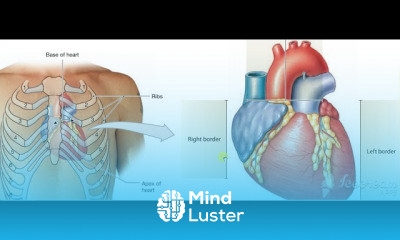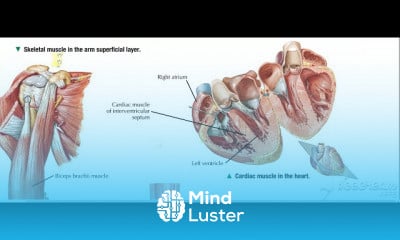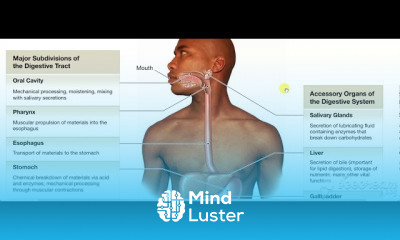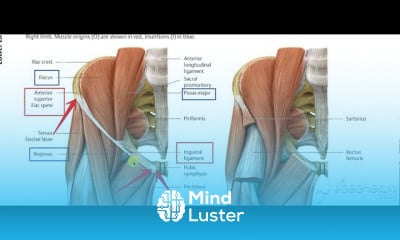Trachea airway 4
Share your inquiries now with community members
Click Here
Sign up Now
Lessons List | 22
Lesson
Comments
Related Courses in Medical
Course Description
What Is the Respiratory System?
The respiratory system is the organs and other parts of your body involved in breathing, when you exchange oxygen and carbon dioxide.
Parts of the Respiratory System
Your respiratory system includes your:
Nose and nasal cavity
Sinuses
Mouth
Throat (pharynx)
Voice box (larynx)
Windpipe (trachea)
Diaphragm
Lungs
Bronchial tubes/bronchi
Bronchioles
Air sacs (alveoli)
Capillaries
How Do We Breathe?
Breathing starts when you inhale air into your nose or mouth. It travels down the back of your throat and into your windpipe, which is divided into air passages called bronchial tubes.
For your lungs to perform their best, these airways need to be open. They should be free from inflammation or swelling and extra mucus.
The Lungs
As the bronchial tubes pass through your lungs, they divide into smaller air passages called bronchioles. The bronchioles end in tiny balloon-like air sacs called alveoli. Your body has about 600 million alveoli.
The alveoli are surrounded by a mesh of tiny blood vessels called capillaries. Here, oxygen from inhaled air passes into your blood.
After absorbing oxygen, blood goes to your heart. Your heart then pumps it through your body to the cells of your tissues and organs.
As the cells use the oxygen, they make carbon dioxide that goes into your blood. Your blood then carries the carbon dioxide back to your lungs, where it’s removed from your body when you exhale.
How Does the Respiratory System Clean the Air?
Your respiratory system has built-in methods to keep harmful things in the air from entering your lungs.
Respiratory System
Hairs in your nose help filter out large particles. Tiny hairs, called cilia, along your air passages move in a sweeping motion to keep the passages clean. But if you breathe in harmful things like cigarette smoke, the cilia can stop working. This can lead to health problems like bronchitis.
Cells in your trachea and bronchial tubes make mucus that keeps air passages moist and helps keep things like dust, bacteria and viruses, and allergy-causing things out of your lungs.
Mucus can bring up things that reach deeper into your lungs. You then cough out or swallow them.
Respiratory System Diseases
Common diseases of the respiratory system include:
Asthma. Your airways narrow and make too much mucus.
Bronchiectasis. Inflammation and infection make your bronchial walls thicker.
Chronic obstructive pulmonary disease (COPD). This long-term condition gets worse over time. It includes bronchitis and emphysema.
Pneumonia. An infection causes inflammation in your alveoli. They might fill up with fluid or pus.
Tuberculosis. A bacterium causes this dangerous infection. It usually affects your lungs but might also involve your kidney, spine, or brain.
Lung cancer. Cells in your lung change and grow into a tumor. This often happens because of smoking or other chemicals you’ve breathed in.
Cystic fibrosis. This disease is caused by a problem in your genes and gets worse over time. It causes lung infections that don’t go away.
Pleural effusion. Too much fluid builds up between the tissues that line your lungs and chest.
Idiopathic pulmonary fibrosis. Your lung tissue becomes scarred and can’t work the way it should.
Sarcoidosis. Tiny clumps of inflammatory cells called granulomas form, often in your lungs and lymph nodes.
Trends
C Programming Language
Communication Skills
MS Excel
Learning English Speaking
program in c language
Python programming language
Python for data science and AI
Web development with Java spring
Digital Marketing Beginners
English greetings and responses
UX design foundations for beginners
Web Design for Beginners
AI fundamentals for beginners
Java Programming Language
Logo Design
Excel skills for busines intermediate
Creating bitmap images from scratch
Building arduino robots and devices
Organization and Architecture COA
Video editing with adobe premiere
Recent
Morning Yoga workout power flow
Yoga shoulder stretches for tension
Gentle morning Yoga flow for beginners
Yoga workout for upper back
Yoga for toned legs and glutes
Yoga deep hip stretch for beginners
Morning Yoga flow for energy
Hands Yoga flow for strength
Yoga workout for toned legs
Yoga for sleep and relaxation
Yoga for lower back pain at home
Detox Yoga for digestion
Chair Yoga for tension relief at home
Yoga for shoulder mobility
Yoga workout for strength
Yoga for Inner thigh flexibility at home
Yoga for restless legs relief
ASMR Yoga for sleep
Yoga wheel stretches
Yoga workout for arm strength



















